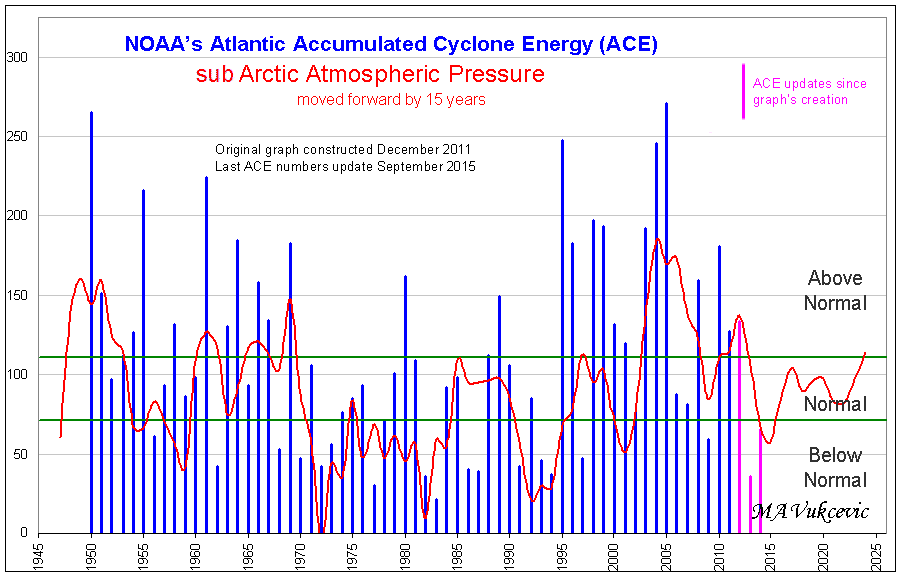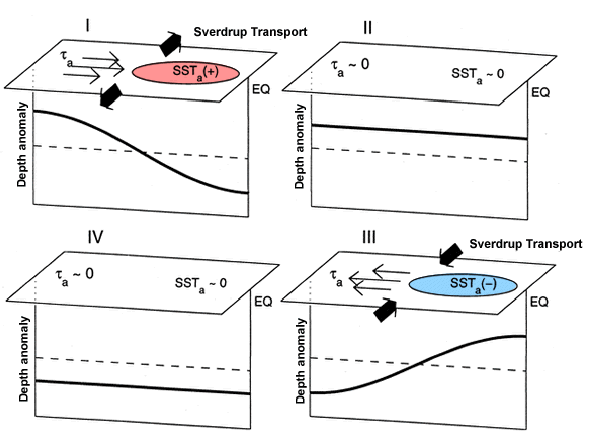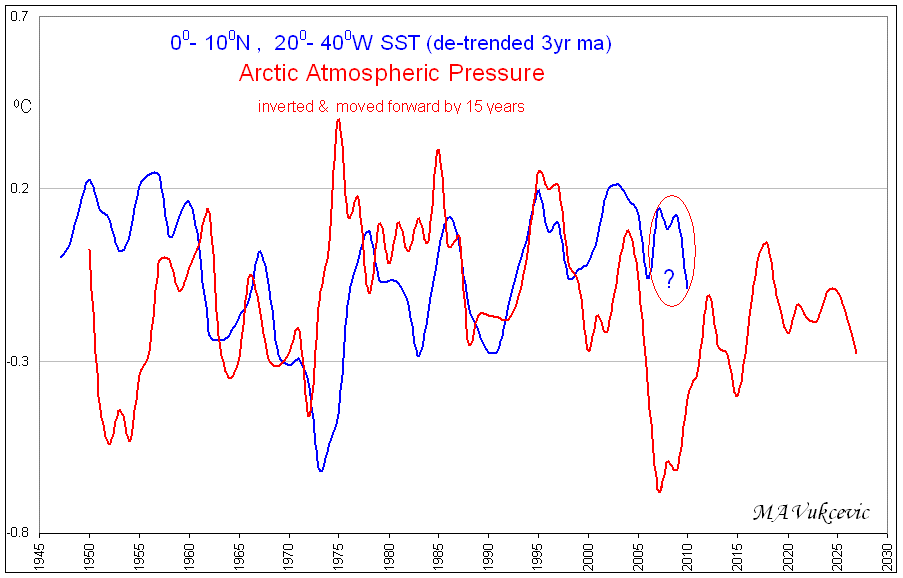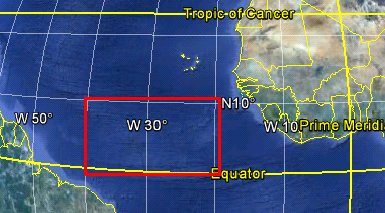Accumulated cyclone energy (ACE) is a measure used by the National Oceanic and Atmospheric Administration (NOAA) to express the activity of individual tropical cyclones and entire tropical cyclone seasons, particularly the North Atlantic hurricane season. It uses an approximation of the energy used by a tropical system over its lifetime and is calculated every six-hour period. The ACE of a season is the sum of the ACEs for each storm and takes into account the number, strength, and duration of all the tropical storms in the season. ' * '
North Atlantic Oscillation – NAO is defined as the fluctuation in the difference of atmospheric pressure at the sea level between two specific locations: Ponta Delgada, Azores and Stykkisholmur/Reykjavik. For atmospheric pressure, data from Reykjavik (are available since 1860s) the principal component of the NAO, are used.

The North Atlantic's Subpolar gyre (see the image above) is the engine of the heat transport across the North Atlantic Ocean. This is a region of the intense ocean - atmosphere interaction (see image below). Cold winds remove the surface heat at rates of several hundred watts per square meter, resulting in deep water convection. These changes in turn affect the strength and character of the Atlantic thermohaline circulation (THC) and the horizontal flow of the upper ocean, thereby altering the oceanic poleward heat transport and the distribution of sea surface temperature (SST).

The atmospheric thermal interaction has an immediate effect on the meandering jet-stream affecting N. Hemisphere's weather and climate. It can be speculated that degree of the ocean - atmosphere interaction is dependant of the prevailing local atmospheric conditions at the time, westerly wind intensity and atmospheric pressure. These factors will determine amount of heat released, and thus depth of down-welling of the now cold current. The imprint of the atmospheric conditions, due to the thermohaline circulation (THC), will eventually reach the critical area of the equatorial Atlantic where the hurricanes are formed.
Hurricane formation in is also due to the intense ocean - atmosphere interaction. Crucial question here is how to establish contact between deep cold currents and the equatorial Atlantic surface?
James (Jim) Hurrell of NOAA:
"Atlantic ENSO
There is some evidence of a coupled atmosphere-ocean mode of variability in the equatorial Atlantic that is dynamically akin to ENSO. As in the Pacific, eastern equatorial Atlantic SSTs are dominated by the seasonal cycle. Here, SSTs are warmest during northern spring, when the equatorial winds are weak and the thermocline is deep. As the year progresses, the southeasterly trade winds strengthen, the thermocline depth decreases and the SSTs cool. Superimposed on this annual cycle are SST anomalies that can exceed 0.5°C, especially during boreal summer. Warm equatorial Atlantic SST anomalies are associated with relaxed easterlies and a southward displacement of the ITCZ, and the overall spatial patterns bear a strong resemblance to those over the tropical Pacific associated with ENSO. However, the smaller amplitude of the fluctuations and the smaller percentage of variance explained by the equatorial Atlantic mode relative to ENSO reinforces the view that the tropical Atlantic is affected much more than the tropical Pacific by remotely forced variability or by other, local modes that are dynamically distinct from the equatorial variations."

The above will make sense only if there is a correlation of the sub-Equatorial SST in the N. Atlantic with delayed Arctic atmospheric pressure. As illustration below confirms existence of a degree of non stationary (could be attributed to the THC variability ?) correlation from mid 1950’s to 2006.

To be continued with more details regarding data sources and processing.
(this is work in progress, all critical comments are welcome and will be considered)
© m.a. vukcevic
